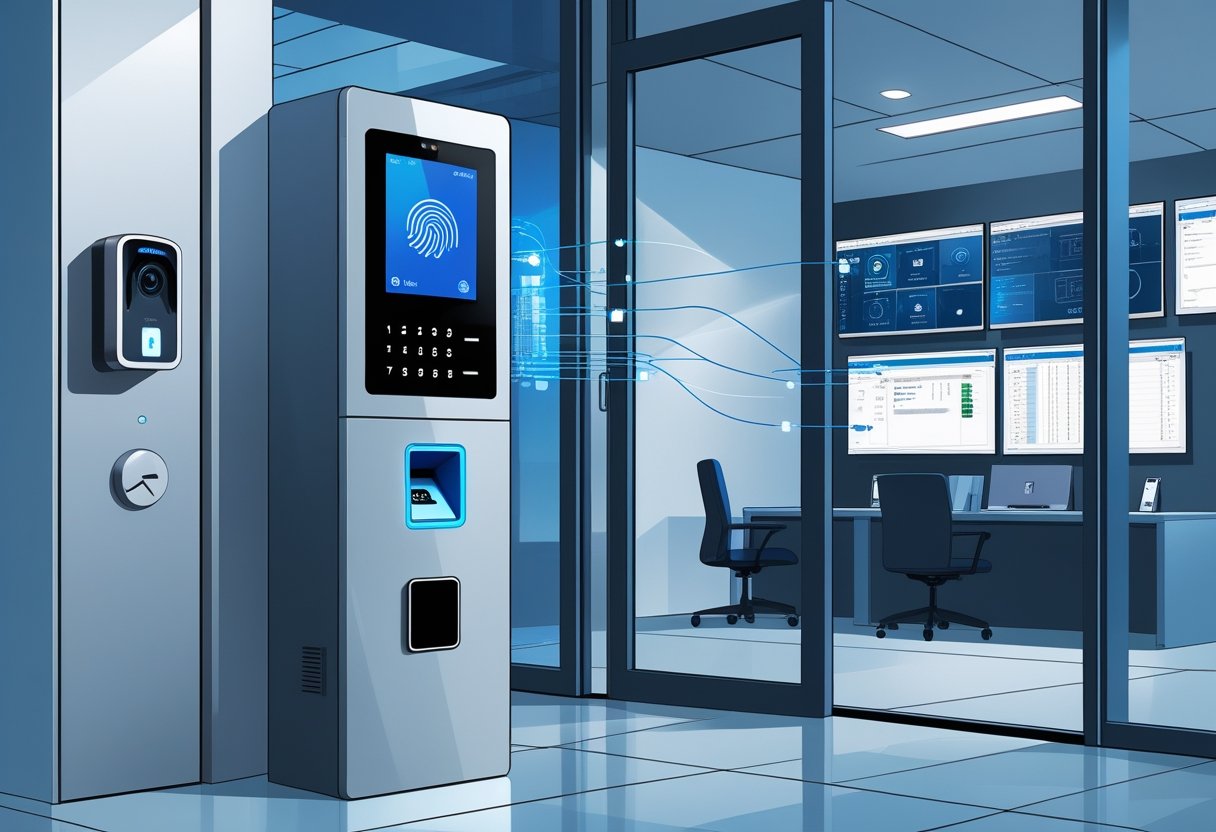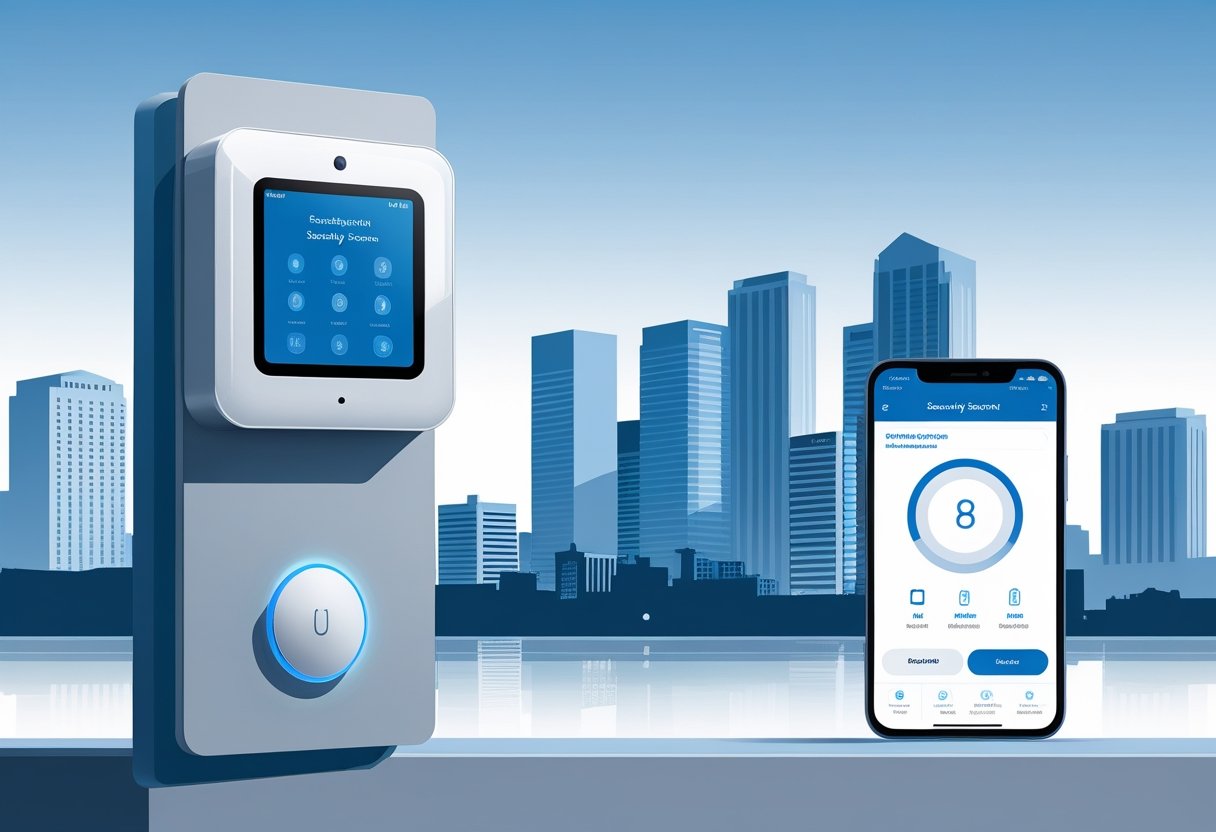Integrating your access control systems with alarm systems can significantly enhance the security and efficiency of your business. This integration allows for a unified response to security breaches, ensuring that your premises are monitored and protected at all times. By combining these technologies, you can streamline operations, improve incident response times, and reduce the likelihood of human error.
In the greater Houston area, security needs vary, making it essential to tailor your integrated system to fit your specific requirements. With seamless communication between access control and alarm systems, you gain real-time alerts and the ability to manage security from a single platform. This approach not only safeguards your assets but also provides peace of mind, knowing that all components of your security infrastructure are working together effectively.
As you explore the benefits of access control and alarm system integration, you’ll discover how it can redefine your security strategies. Understanding the available options and best practices is key to implementing a solution that meets the unique demands of your facility while delivering maximum protection.
Fundamentals of Access Control and Alarm System Integration
Integrating access control systems with alarm systems creates a robust security infrastructure. This synergy enhances both functionality and effectiveness in protecting your property. Below are essential components defining each system and their integration.
What Is Access Control?
Access control systems manage who can enter specific areas within your premises. These systems typically use various methods, including key cards, biometric readers, and PIN codes.
Key components include:
- Authentication Methods: Devices that verify an individual’s identity.
- Access Levels: Customizable permissions for different user roles.
- Audit Trails: Logs that track access attempts, providing accountability.
By effectively managing access, you can limit unauthorized entries and secure sensitive areas.
Overview of Alarm Systems
Alarm systems serve as an immediate notification system for unauthorized access or emergencies. They can detect intrusions, fires, and other threats.
Common types include:
- Intrusion Alarms: Triggered by unauthorized entry through doors or windows.
- Fire Alarms: Detect smoke or heat, alerting occupants and emergency services.
- Environmental Alarms: Monitor for water leaks or temperature changes.
Integrating these systems with access control allows for a comprehensive response to security breaches.
Components of Integrated Security Solutions
An integrated security system combines access control, alarm systems, and typically surveillance systems into a unified platform. Key components include:
- Centralized Management Software: Provides a single interface for monitoring all systems.
- Shared Data: Alarms and access logs work together for real-time insights.
- User-Friendly Interfaces: Simplifies managing security settings and responding to alerts.
This integration enhances situational awareness and streamlines security operations, making it essential for effective security management in the greater Houston area.
Benefits of Integrating Access Control and Alarm Systems
Integrating access control and alarm systems significantly enhances your security management. This approach strengthens your security posture, effectively preventing unauthorized access while providing operational efficiency and centralized monitoring for your organization.
Enhanced Security and Threat Prevention
By integrating access control systems with alarm functionalities, you create a fortified security framework. This combination ensures that all entry points are monitored and alerts are triggered for any unauthorized attempts. Advanced systems can immediately lock down access, deterring potential intruders.
Real-time alerts provide crucial information during security breaches, allowing for swift responses. Enhanced security measures, such as biometrics or key cards, can be employed to ensure only authorized personnel can gain entry. As a result, you significantly reduce the risk of theft or vandalism.
Centralized Monitoring and Management
A unified platform for access control and alarm systems offers centralized monitoring, making security management straightforward. You can view and control all security features from a single interface, streamlining your workflow.
This integration allows you to monitor video feeds, access logs, and alarms in real-time. With this setup, you can quickly assess situations and respond accordingly, improving your ability to manage incidents effectively. Centralized management tools also enable you to generate reports for better analysis of security trends.
Operational Efficiency and Flexibility
Integrating these systems enhances operational efficiency by minimizing the complexity of managing separate systems. You gain the flexibility to customize settings according to your specific needs. This adaptability can encompass anything from scheduling access times to adjusting alarm sensitivity.
Furthermore, automated systems can preemptively alert you to potential security threats without manual intervention. This proactive approach not only saves time but also reduces human error, allowing for a more reliable security solution tailored to your organization’s needs in the greater Houston area.
Key Technologies in Security System Integration
Integrating access control and alarm systems involves several key technologies that enhance security and efficiency. These technologies include real-time monitoring solutions, advanced surveillance systems, and comprehensive intrusion detection mechanisms, all of which work together to protect your assets.
Real-Time Monitoring Solutions
Real-time monitoring solutions provide you with immediate visibility into your security environment. These systems utilize advanced software that aggregates data from various security equipment.
With real-time alerts, you can respond swiftly to potential threats. Features often include remote access through mobile devices, enabling you to monitor security cameras and alarms from anywhere in the Houston area. In addition, many platforms allow for the integration of access control logs, enabling you to track who enters and exits facilities seamlessly.
Surveillance Cameras and Video Surveillance
Surveillance cameras are essential components of any comprehensive security system. High-definition video surveillance provides clear images that help identify security threats quickly.
Modern cameras often feature capabilities like night vision, motion detection, and HD recording to ensure 24/7 monitoring of your premises. Advanced systems also offer cloud storage solutions, making it easier to access footage without needing on-site hardware. This flexibility enhances the effectiveness of your security measures and aids in investigations when incidents occur.
Intrusion Detection Systems and Sensors
Intrusion detection systems (IDS) are designed to identify unauthorized entry into protected areas. By using various sensors, including motion detectors and door/window contacts, these systems alert you in real-time when a breach occurs.
Many systems support integration with alarm signals that activate immediately, ensuring that you receive prompt notifications. Effective intrusion detection solutions can also distinguish between false alarms, reducing unnecessary alerts while maintaining high security.
Fire Alarms and Environmental Monitoring
Fire alarms are a critical aspect of security that often gets overlooked. Modern fire alarm systems not only detect smoke and heat but also integrate with other security measures to provide comprehensive protection.
Environmental monitoring adds another layer by overseeing factors like temperature and humidity, helping to prevent issues such as water damage or equipment failure. On receiving alerts, you can take immediate action, ensuring the safety of your property and personnel in the greater Houston area.
By combining these technologies in a unified approach, you enhance the overall security and efficiency of your facility, making it easier to manage potential risks.
Access Methods and Credential Management
Effective access control relies on various methods for credential management. Understanding the different access technologies helps you choose the best fit for your organization's needs, particularly in the greater Houston area.
Keycards and Biometric Scanners
Keycards remain a popular choice for access control due to their simplicity and ease of use. They come in various forms, such as proximity cards and magnetic stripe cards, allowing quick entry to secured areas. Keycards can be easily programmed to restrict access to specific zones and times, enhancing security.
Biometric scanners, such as fingerprint or facial recognition systems, add a higher level of security. These scanners require unique physical traits for access, ensuring that only authorized individuals can enter. Combining keycard systems with biometric technology offers a robust solution, as it improves both security and user convenience. Compatibility with existing systems should always be considered to ensure seamless integration in your security framework.
Mobile Credentials and Modern Authentication
Mobile credentials leverage smartphones for access control, allowing you to unlock doors easily without physical cards. This method enhances convenience, as users can carry one device instead of multiple cards. Many systems now offer mobile apps for managing credentials, providing real-time updates and notifications for access events.
Modern authentication techniques, including multi-factor authentication (MFA), further secure access. You might use a combination of mobile credentials, keycards, and biometrics for a layered approach. Ensure your systems can support these technologies for optimal security and flexibility in your operations.
Best Practices for Effective Security System Integration
Integrating access control and alarm systems requires careful planning and execution. Focus on scalability, compatibility, and effective monitoring to create a robust security framework for your property in the greater Houston area.
Scalability and Future-Proofing
When designing your security system, consider scalability. You want a system that can grow as your needs change. Choose a platform that allows for easy addition of devices and features without a complete overhaul.
Invest in solutions that support future technologies. Look for systems that can incorporate advancements in security measures, such as AI detection and cloud-based services. This approach not only maximizes your initial investment but ensures that your system remains effective against evolving threats.
A modular setup allows you to expand coverage effortlessly. It’s essential to select components that can interconnect seamlessly as you scale.
Ensuring Compatibility Across Systems
Compatibility is crucial when integrating different security systems. Verify that various components can communicate effectively. This may involve checking compatibility between hardware like access control devices and alarm systems.
Utilize open architecture systems when possible. These systems allow easier integration with third-party applications, enhancing functionality. Before purchasing, review manufacturer specifications and ensure compliance with industry standards.
Conduct thorough testing of integrated systems to identify and resolve potential issues. Regular updates and maintenance can help avoid compatibility problems down the line, maintaining a reliable security framework.
Alarm Monitoring and Response Strategies
Implementing effective monitoring and response strategies is vital for security integration. Choose a solution that provides real-time alerts for alarm triggers and access control breaches. This feature ensures rapid responses to potential threats.
Consider partnering with a professional monitoring service. This not only guarantees 24/7 surveillance but also enables timely emergency response when necessary. Ensure that response protocols are clear and communicated to your team.
Incorporate remote monitoring capabilities. This allows you to manage and assess your security system from anywhere, giving you peace of mind. Advanced analytics can further help you understand security trends and refine your response strategies.
Frequently Asked Questions
Integrating access control systems with alarm systems offers several advantages, including enhanced security and streamlined operations. You can expect to find detailed information on costs, functionality, and the benefits of specific components.
How can integrating access control systems with alarm systems enhance security?
By integrating access control with alarm systems, you create a comprehensive security solution. This setup allows for real-time monitoring and alerts, ensuring faster responses to security breaches. Additionally, coordinated systems can automatically lock down areas when an alarm is triggered.
What are the costs associated with integrating access control with alarm systems?
Costs for integration can vary significantly based on the complexity of the systems involved. Factors influencing price include equipment needed, installation labor, and any necessary upgrades to existing infrastructure. Generally, you should prepare for both upfront and ongoing maintenance expenses.
What is the role of a fire alarm relay in access control integration?
A fire alarm relay plays a crucial role by connecting fire alarm systems to access control units. When a fire alarm is activated, the relay signals the access control system to unlock doors for safe evacuation. This integration ensures that individuals can exit quickly during emergencies.
How does fire alarm integration improve the functionality of access control systems?
Integrating fire alarms enhances the overall functionality of access control systems. It allows for automatic door unlocking during a fire evacuation, prioritizing safety. This integration can also trigger alerts for security personnel, creating a coordinated emergency response strategy.
What are the benefits of using maglocks in conjunction with fire alarm relays?
Using magnetic locks (maglocks) with fire alarm relays ensures that doors remain securely locked during normal operations. In the event of a fire alarm, the maglocks will release, facilitating a safe and efficient evacuation. This combination effectively balances security with safety needs.
How do integrated alarm systems streamline security protocols?
Integrated alarm systems simplify security protocols by creating a unified response strategy. You can manage alerts, access permissions, and monitoring through a single interface. This level of integration reduces the chances of human error and enhances the efficiency of security operations.
.svg)



.svg)


.svg)



